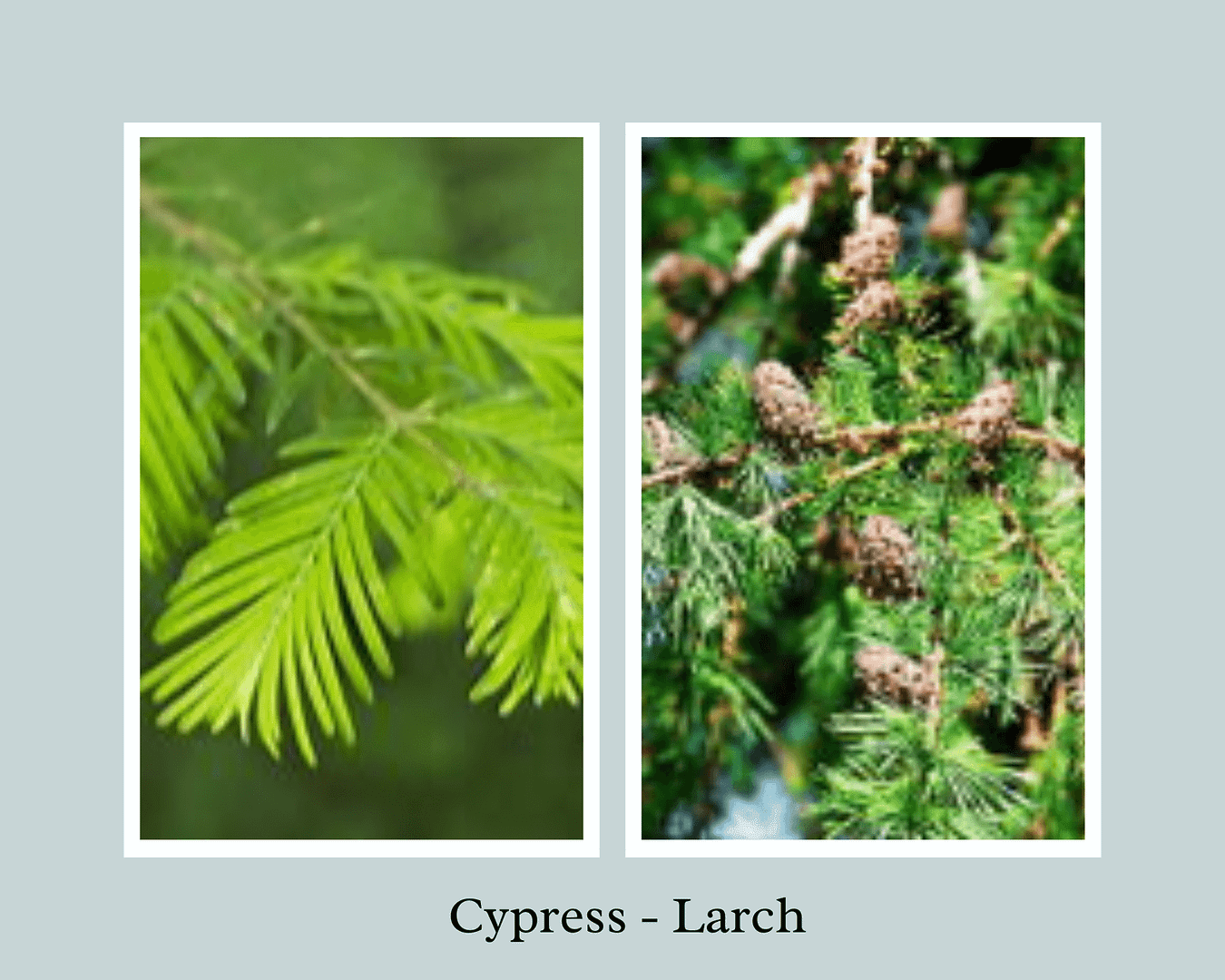How to tell them from other trees: In summer the larch and cypress may easily be told from other trees by their leaves. These are needle-shaped and arranged in clusters with numerous leaves to each cluster in the case of the larch, and feathery and flat in the case of the cypress. In winter, when their leaves have dropped off, the trees can be told by their cones, which adhere to the branches.
There are nine recognized species of larch and two of bald cypress. The larch is characteristically a northern tree, growing in the northern and mountainous regions of the northern hemisphere from the Arctic circle to Pennsylvania in the New World, and in Central Europe, Asia, and Japan in the Old World. It forms large forests in the Alps of Switzerland and France.
The European larch and not the American is the principal species considered here, because it is being planted extensively in this country and in most respects is preferable to the American species.
The bald cypress is a southern tree of ancient origin, the well-known cypress of Montezuma in the gardens of Chepultepec having been a species of Taxodium. The tree is now confined to the swamps and river banks of the South Atlantic and Gulf States, where it often forms extensive forests to the exclusion of all other trees. In those regions along the river swamps, the trees are often submerged for several months of the year.
How to tell them from each other: In summer the larch may be told from the cypress by its leaves. In winter the two can be distinguished by their characteristic forms. The larch is a broader tree as compared with the cypress and its form is more conical. The cypress is more slender and it is taller. The two have been grouped together in this study because they are both coniferous trees and, unlike the other Conifers, are both deciduous, their leaves falling in October.
THE EUROPEAN LARCH ( Larix europaea)
Distinguishing characters: Its leaves, which are needle-shaped and about an inch long, are borne in clusters close to the twig. There are many leaves to each cluster. This characteristic together with the spire-like form of the crown will distinguish the tree at a glance.
Leaf: The leaves are of a light-green color but become darker in the spring and in October turn yellow and drop off. The cypress, which is described below, is another cone-bearing tree which sheds its leaves in winter.
Form and size: A medium-sized tree with a conical head and a straight and tapering trunk.
Range: Central Europe and eastern and central United States.
Soil and location: Requires a deep, fresh, well-drained soil and needs plenty of light. It flourishes in places where our native species would die. Grows very rapidly.
Enemies: The larch is subject to the attacks of a sawfly, which has killed many trees of the American species. A fungus ( Trametes pini) which causes the tree to break down with ease is another of its enemies.
Value for planting: A well-formed tree for the lawn. It is also useful for group planting in the forest.
Commercial value: Because its wood is strong and durable the larch is valuable for poles, posts, railroad ties, and in shipbuilding.
Other characters: The fruit is a small cone about one inch long, adhering to the tree throughout the winter.
Comparisons: The tree is apt to be confused with the American larch, also known as tamarack and hackmatack, but differs from it in having longer leaves, cones twice as large and more abundant and branches which are more pendulous.
The larch differs from the bald cypress in the broader form of its crown and the cluster-like arrangement of its leaves. The twigs of the bald cypress are flat and feathery. The larch and bald cypress have the common characteristics of both shedding their leaves in winter and preferring to grow in moist or swampy soils. The larch, especially the native species, forms the well-known tamarack swamps of the north. The bald cypress grows in a similar way in groups in the southern swamps.
BALD CYPRESS ( Taxodium distichum)
Distinguishing characters: The feathery character of the twigs, and the spire-like form of the tree, which is taller and more slender than the larch, will distinguish this species from others.
Leaf: The leaves drop off in October, though the tree is of the cone-bearing kind. In this respect it is like the larch.
Form and size: Tall and pyramidal.
Range: The cypress is a southern tree, but is found under cultivation in parks and on lawns in northern United States.
Soil and location: Grows naturally in swamps, but will also do well in ordinary well-drained, good soil. In its natural habitat it sends out special roots above water. These are known as “cypress knees” and serve to provide air to the submerged roots of the tree.
Enemies: None of importance.
Value for planting: An excellent tree for park and lawn planting.
Commercial value: The wood is light, soft, and easily worked. It is used for general construction, interior finish, railroad ties, posts and cooperage.
Other characters: The bark is thin and scaly. The fruit is a cone about an inch in diameter. The general color of the tree is a dull, deep green which, however, turns orange brown in the fall.
Comparisons: The cypress and the larch are apt to be confused, especially in the winter, when the leaves of both have dropped. The cypress is more slender and is taller in form. The leaves of each are very different, as will be seen from the accompanying illustrations.


